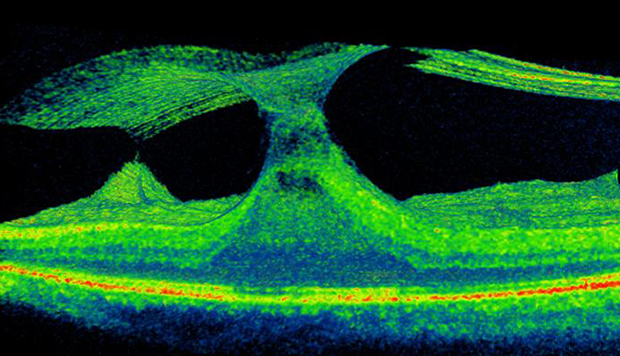
Why do I have vitreomacular traction The vitreous gel shrinks and pulls away from the macula at different rates in each person, but it occurs in everyone with time. If this happens, surgical intervention may be required in order to reduce the likelihood of permanent vision loss. This pulling and distortion of the normal macular structure is called vitreomacular traction (VMT), and this can result in distorted and/or blurred vision. In rare cases, the undo stress at the point of the vitreous adhesion creates a macular hole, further distorting and darkening the central vision.
#Vmt ophthalmology free
Often, the adherent vitreous will free itself and the macula will return to its normal condition. A study of the natural history of vitreomacular traction syndrome by OCT, Ophthalmology, vol.
#Vmt ophthalmology professional
Your eye health professional may also use. Better BCVA at the first visit was associated with an increased likelihood of resolution of the VMT, but increasing age, CMT, and BCVA in the end of the follow-up was associated with a reduction in the likelihood of resolving. This condition, Vitreomacular Traction, can make it difficult to do daily tasks that require sharp vision, such as reading or watching television. An optometrist may monitor your condition but they will refer you to an ophthalmologist for any necessary treatment. The resulting “tug” on the macula causes changes in its shape and anatomy, preventing its ability to properly process incoming light rays. Sometimes, the vitreous gel’s fibers adhere in an abnormally strong manner, not allowing the vitreous to properly pull away from the macula, the part of the retina responsible for central vision. This normal aging process is called Posterior Vitreous Detachment, or PVD.

The vitreous contains millions of tiny intertwined fibers that are connected to the retina from birth and throughout our younger years.Īs we age, the vitreous slowly liquefies, shrinks and gradually separates from the retinal surface. The goal of this activity is to evaluate the. Surgery is also necessary to reduce or remove any pulling forces on the macula and allowing it to settle against the wall of the eye. The center of the eye is filled with vitreous humor - a clear, gel-like substance that lies between the lens (near the front of the eye) and the retina, the light-sensitive, inner lining of the inside of the eye. This activity is intended for ophthalmologists and other physicians who care for patients with focal VMT. VMT Ophthalmology can also involve a surgical procedure to close the macular hole and restore vision. Vitreomacular traction syndrome, or VMT, is an eye condition that can cause symptoms ranging from mild blurry vision, to distorted and darkened central vision.


 0 kommentar(er)
0 kommentar(er)
